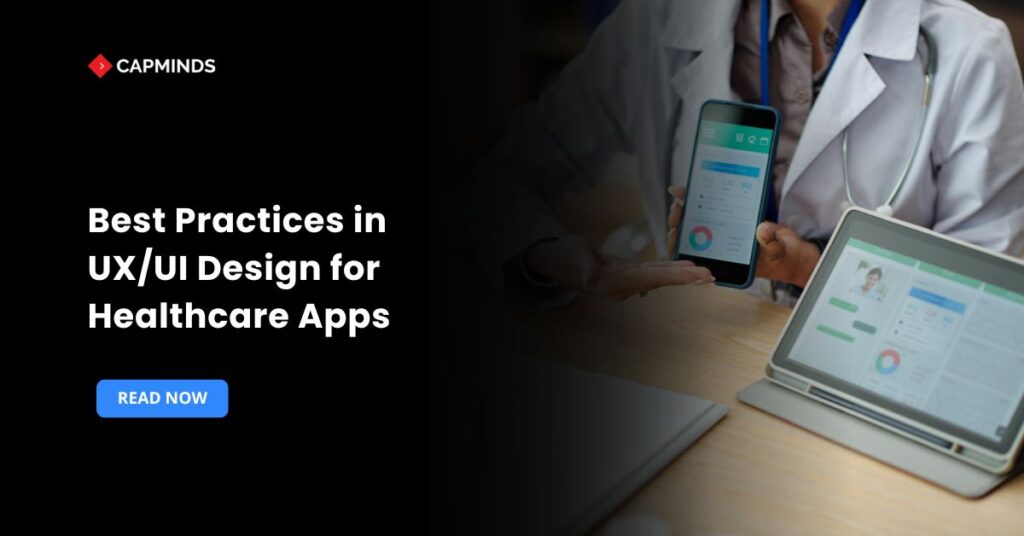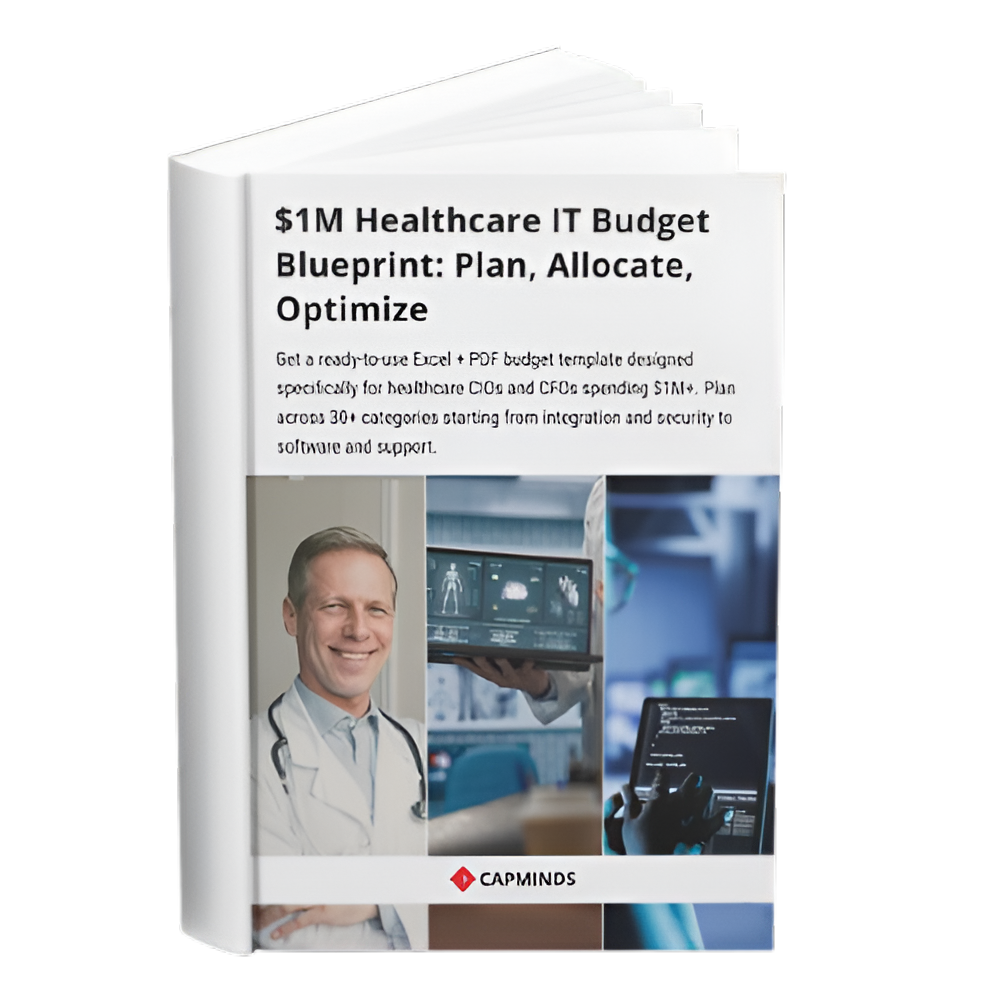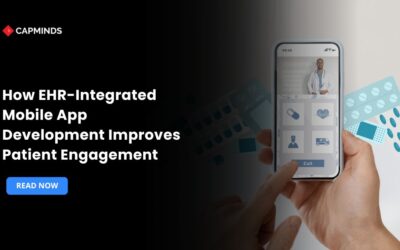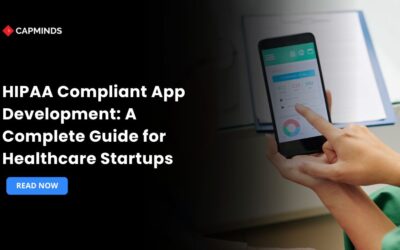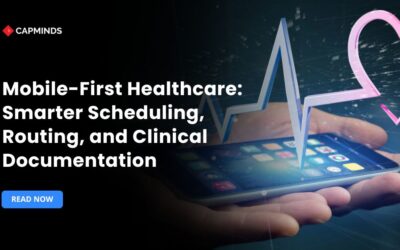Best Practices in UX/UI Design for Healthcare Apps
Mobile health (mHealth) apps are changing the way we relate to our health, and this is seen in areas such as appointment management to chronic condition monitoring. 80% of patients give up on apps with a bad user experience.
It is not only a matter of a small inconvenience, and in healthcare, it can lead to the inability to receive medications, diagnoses, and, finally, worse patient outcomes. This is why outstanding UX/UI design is not a luxury but a very crucial element of patient satisfaction and digital adoption in the creation of healthcare apps.
This blog post aims to explore the best practices in healthcare app development that would not only be useful but also intuitive, engaging, and reliable, and create a new standard in healthcare mobile app development.
The Significance of UX/UI in Healthcare Apps
Imagine that you have to do something complex in medicine, such as mastering a new diagnosis, reconciling prescriptions, and checking vital signs, but in an app that is cumbersome, unstructured, and visually bombarding.
- More effective Patient Engagement – When the app is easy and simple to use and understand, the patients will feel more active in the treatment process and follow the treatment plan more closely.
- Better Patient Safety – A well-crafted information navigation, data entry, and presentation of information will easily prevent the occurrence of user errors, which is a hazardous attribute in a medical facility.
- Higher Trust/Adoption – A properly designed app puts confidence in individuals. The more the application seems professional, secure, and easy to use, the more patients will trust it.
- Efficiency for Providers – For healthcare providers, properly developed apps can lead to the optimization of work routines, minimize the administrative load, and give professionals more time to devote directly to the patients.
- Competitive Advantage – Within the saturated digital health environment, an outstanding user experience can also become a great differentiator, drawing and keeping users.
Key UX Principles for Healthcare Apps
1. Simplicity and Clarity
Healthcare information might be complicated. The UX of your app ought to be designed to make this easier with simple language, use of very little jargon, and easy navigation. Each screen is to serve one purpose.
2. Intuitive Navigation
It should not make anyone lose. Use common navigation patterns such as tab bars, hamburger menus, and make the information architecture rational and predictable.
3. Consistency
Use uniform design components, terminology, and patterns of interaction through the app. This will decrease the cognitive load and will make the app seem familiar.
4. Feedback and Responsiveness
Present instant visual feedback on user action, like a loading spinner, confirmation message. The mobile application ought to be responsive and fast.
5. Error Prevention and Recovery
Design to avoid common mistakes, such as clear input fields, validation messages. In case of a mistake, give clear guidelines on what to do to fix it.
6. Personalization
Healthcare is highly personal. Engagement may be greatly improved by letting users customize their dashboard, preferences and by providing personalized information.
Related: 10 Must-Have Features for Successful Healthcare Mobile Apps
UI Design Best Practices for Medical Apps
UX deals with the way of how a user feels, UI deals with the way of how it looks and interacts. An effective UI design of medical apps creates credibility and helps users comprehend.
- Clean and Simple Designs – Do not be cluttered. Also, leave lots of white space so that the content is readable and scannable.
- Strategic Color Palette – Select relaxing and corporate colors. Blues, greens, and grays that tend to create trust and calm. Accent colors should be used sparingly when calling to action or when there is important information.
- Clear Typography – Use fonts that are legible, readable, and of the right size, particularly for older users or ones with visual deficiencies. Provide adequate text and background distinction.
- Clean Iconography – Use common icons as much as you can. In case there is a need to have custom icons, then they should be intuitive and have text labels.
- Simple Forms and Data Entries – Design simple forms that are simple to complete, have clear labels and helpful hints, and proper input types such as date pickers on dates.
- Visual Hierarchy – Visual hierarchy guides the eye of the user by way of size, colour, and position to ensure that the most significant information or action on a screen is emphasized.
- Data Visualization – When providing health data such as blood pressure, glucose levels, make clear and engaging copies of charts, graphs, and infographics.
Ensuring Compliance and Accessibility
HIPAA-Compliant App Design
HIPAA has very stringent regulations regarding the protection of PHI. This not only affects the issues of backend security, but also the way of front-end design, especially user access, viewing, and sharing of their data. Secure flow of consent, ensure strong data encryption indicators.
Healthcare UX Accessibility (ADA Compliance)
The apps should be accessible to all people, including people with disabilities. Compliance with Web Content Accessibility Guidelines (WCAG) and ADA. This is about bearing in mind screen readers compatibility, adequate color contrast, and the use of the keyboard, and larger text.
HL7/FHIR UI Standards (EHR Integration)
When the apps are to be integrated with EHR, the knowledge of such standards as HL7 and FHIR is paramount. They are mostly data exchange standards, and they also govern the way information is organized and displayed, which impacts the interoperability and smooth information flow between the systems.
Common UX Mistakes to Avoid in Healthcare Apps
- Information Overload – It is possible to have too much medical information presented to the user. Give priority to crucial information.
- Medical Terminologies – The use of complicated medical terms without proper explanations drives patients away. Speak in plain language.
- Inconsistent Design – The visual styles or interaction patterns should not be jumped between, as it brings confusion and mistrust.
- Negligence in Accessibility – By not designing to accommodate the visually, audibly, or motor impaired user, it would exclude a large percentage of the population.
- Absence of Feedback – It is necessary to inform the users that their actions are recorded. The silence of the app may cause frustrations and doubts.
- Unattractively Formatted Forms – Long and confusing forms that are not well validated may result in high abandonment rates.
Elevate Your Digital Health Solutions with CapMinds’ Healthcare App Development Services
We are CapMinds, and our business focuses on the automation of complicated healthcare processes to provide patient-friendly experiences in mobile applications.
The services we offer in healthcare app development are a combination of innovativeness, compliance, and user-friendly design, which enables providers and patients to interact with ease.
Our healthcare mobile applications improve the care delivery and engagement process through scalable, secure, and user-oriented applications that are delivered from concept to deployment.
Our Key Service Offerings:
- Custom Healthcare App Development for patients and providers
- UX/UI Design Services that prioritize usability and accessibility
- Mobile Health (mHealth) App Solutions for remote care and monitoring
- HIPAA-Compliant Development ensuring data protection and trust
- EHR/EMR Integration (HL7/FHIR) for unified, connected experiences
Choose CapMinds as your technology partner to build healthcare apps that inspire confidence, improve patient outcomes, and set a new benchmark in digital health innovation.
